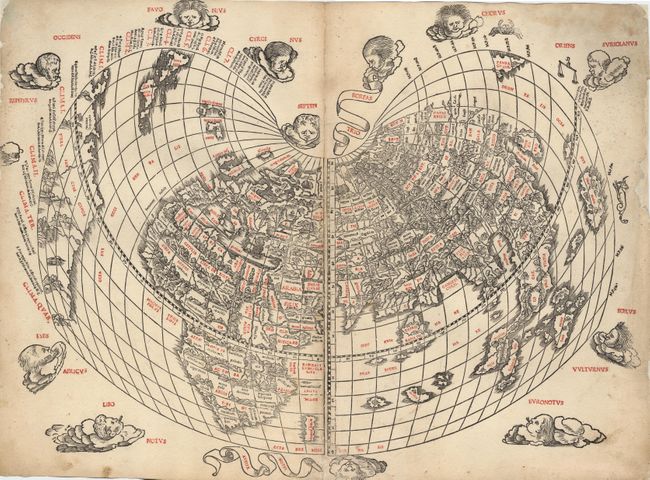Subject: World
Period: 1511 (published)
Publication: Claudii Ptholemaei Alexandrini liber geographiae cum tabulis…
Color: Black & White
Size:
22.3 x 16.2 inches
56.6 x 41.1 cm
This rare and distinctive "modern" world map, from the 1511 edition of Ptolemy's "Geograhia", is an extremely early example of 16th century Venetian cartography and one of the earliest maps obtainable by today's collectors. One of the first maps to show the newly discovered Americas, it presents a fascinating view of the post-Columbian world. South America, of which only the western coast is shown, is named "Terra Sanctae Crucis" and the islands of Cuba and Hispanola appear overly large. Further north is the island "terra laboratorus" and a region named "regalis domus", resulting from the Portuguese explorations of the Corte Real brothers in 1501. On the opposite side of the map the island of "Zampagv" (Japan), appears for only the second time on a printed map. The first appearance being on the Contarini/Rosselli map of 1506 of which there is only one known copy. The land masses are vigorously engraved with mountain ranges, rivers and placenames, and the map is surrounded by decorative windheads and signs of the zodiac. It is the first map produced using two-color woodblock printing, with the placenames printed in red ink by means of type set into the woodblock and applied with a second strike of the plate. The distinctive cordiform (heart-shaped) projection, first introduced here by Sylvanus, was adopted by several later cartographers and used for a number of important 16th century maps.
References: Shirley #32 (noted as rare).
Condition: A
Printer's crease at bottom and trimmed into "Merides" (apparently as issued). A bit of roughness in side margins and finger soil at corners. Overall a very good example of this rarely seen map.


